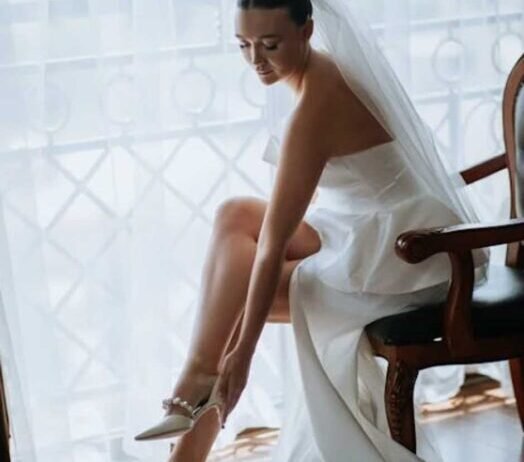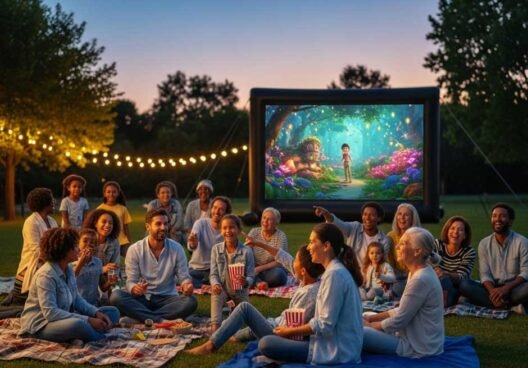Your wedding was an unforgettable day full of emotion, delicate details, and love—everything carefully curated to reflect your unique style. But once the day is over and the decorations are packed away, how do you keep the memory alive in a way that still feels cohesive and intentional?
That’s where your wedding photobook comes in. A thoughtfully designed photobook doesn’t just hold pictures; it gives the moments a story and a visual rhythm. Matching that design with your wedding theme ensures the whole experience feels complete—even years down the road. So how do you align your wedding photobook style with the vibe of your big day?
Let’s walk through it together.
Understanding the Core Elements of Your Wedding Theme
Before diving into layouts, borders, and textures, take a step back and reflect on what made your wedding feel like “you.” Was it rustic and cozy, or elegant and formal? Maybe you went minimal, or full-on vintage glam?
Your wedding theme likely included:
- A specific color palette
- Texture choices (linen, wood, velvet, etc.)
- Flower arrangements
- Attire style
- Venue aesthetic
All of these elements can help shape your photobook design. Don’t just think in terms of colors—consider the mood of your wedding and what tone you want your album to convey.
Choosing a Layout That Reflects the Style of the Day
The layout of your photobook plays a huge role in how your memories are visually experienced. It’s more than just dragging and dropping pictures on a page.
Minimalist Weddings Benefit From Clean, Open Layouts
If your wedding theme leaned toward modern simplicity—think monochrome palettes, sleek lines, or a loft venue—go for:
- Plenty of white space around photos
- Grid-based layouts
- Minimal text, possibly just simple captions or dates
Let the photos do the storytelling. A cluttered design would detract from the elegance of your minimalist aesthetic.
Rustic or Boho Weddings Pair Well With Layered or Asymmetrical Layouts
Were you outdoors beneath string lights, surrounded by wildflowers and natural materials? A more organic layout style will evoke that earthy feel:
- Mix photo sizes for flow and contrast
- Feature full-page spreads of scenery or foliage
- Handwritten captions or scrapbook-style embellishments can work well (choose a personal font or light graphic elements)
Keep it casual but balanced. You don’t want to tip into messy.
Formal or Traditional Weddings? Opt for Symmetry and Structured Spreads
If you had a classic church ceremony, traditional dress code, and elaborate floral arrangements, structure will do your album justice:
- Use symmetrical photo groupings
- Include quotes or excerpts from readings or vows
- Choose a serif-style font for text to echo tradition
Think of it like a timeless photo book that could be passed down through generations.
Matching Colors and Tones With Purpose
This might be the most instinctive piece—most couples want their album to reflect the wedding palette. But it’s important not to go overboard.
For example:
- If your color scheme was soft blush and sage, use those as accent colors—not page backgrounds.
- Stick to neutrals for most of the album pages, letting your wedding hues appear in subtler ways: in borders, divider pages, or text color choices.
Another often overlooked tip: adjust the post-editing tone of your photos to match the overall vibe. A romantic, low-lit reception shouldn’t be edited to look bright and clinical. Consistency is key.
Picking the Right Cover Materials and Finishes
The cover alone can say so much about your wedding. A rustic wedding might call for something like kraft paper or linen. A modern celebration? Maybe a sleek matte hardcover. The tactile experience of your album should mirror that of your actual day.
Here’s a quick match-up guide:
| Wedding Style | Ideal Cover Material
|
|---|---|
| Rustic or Boho | Linen, natural cotton, leather wrap |
| Modern Minimalist | Matte hardcovers, smooth photo wrap |
| Classic or Traditional | Leather-bound, embossed title |
| Beach or Destination | Soft-touch fabric, cool-tone linen |
Also think about extras like foil stamped titles, embossing, or protective sleeves. Small luxury touches make a difference—especially for formal weddings.
Incorporating Details That Tell a Bigger Story
Photos are obviously the heart of your wedding photobook, but the supporting design elements create the emotion.
Sprinkle in:
- Excerpts from your vows or ceremony readings
- Lyrics from your first dance song
- A scan of the wedding invitation or program
- Behind-the-scenes moments with loved ones
Matching your photobook to your theme doesn’t mean making every page an exact replica of your table setting. It means honoring the mood and emotion of the day. If your wedding raised glasses and brought tears, let your album feel like that too.
Let Your Photographer’s Style Guide You
If you’re working with a professional photographer—and chances are, you are—use their artistic eye as an anchor. Every photographer brings a unique editing style: some lean bright and airy, others rich and moody.
Trust their visual tone and work with it rather than forcing your photobook to look entirely different. This not only creates harmony but saves you hours of second-guessing design choices.
Avoid Overdesigning—Less Is More
A common mistake people make with wedding photobook designs is trying too hard to make it “extra special.” What usually ends up happening is visual clutter that distracts from the actual moments.
Your theme should be present enough to feel intentional—but subtle enough to let the photography breathe. Heavy graphics, novelty fonts, and too many decorative elements can clash with your photos or age poorly.
Stick to timeless choices with light thematic touches. Think of your photobook as a visual narrative, not an art project.
Where to Create a Cohesive Thematic Photobook
A well-designed photobook feels magical—and it’s even better when the creation process is simple and intuitive. If you’re looking for a professional-quality option that allows for full customization aligned with your unique style, platforms like wedding photobook services are a great place to start.
Many offer customizable templates based on theme, layout guides, and high-end materials that help elevate your design while staying true to the heart of your celebration.
Final Thoughts: Make Design Choices That Feel Like You
Matching your wedding photobook to your wedding theme isn’t about being perfectly on-brand—it’s about creating a sense of harmony across the experience. When your photobook reflects your wedding’s colors, mood, and personality, it becomes more than just a keepsake. It transforms into an extension of your day.
As you sift through those beautiful photos, trust your instincts. Lean into what made your wedding feel special and let that guide your creative decisions. And just like you trusted the process of planning your wedding, trust the process of preserving the memory.
Start designing, play with options, and don’t be afraid to share your favorite spreads once your photobook is complete. You never know who you might inspire.








